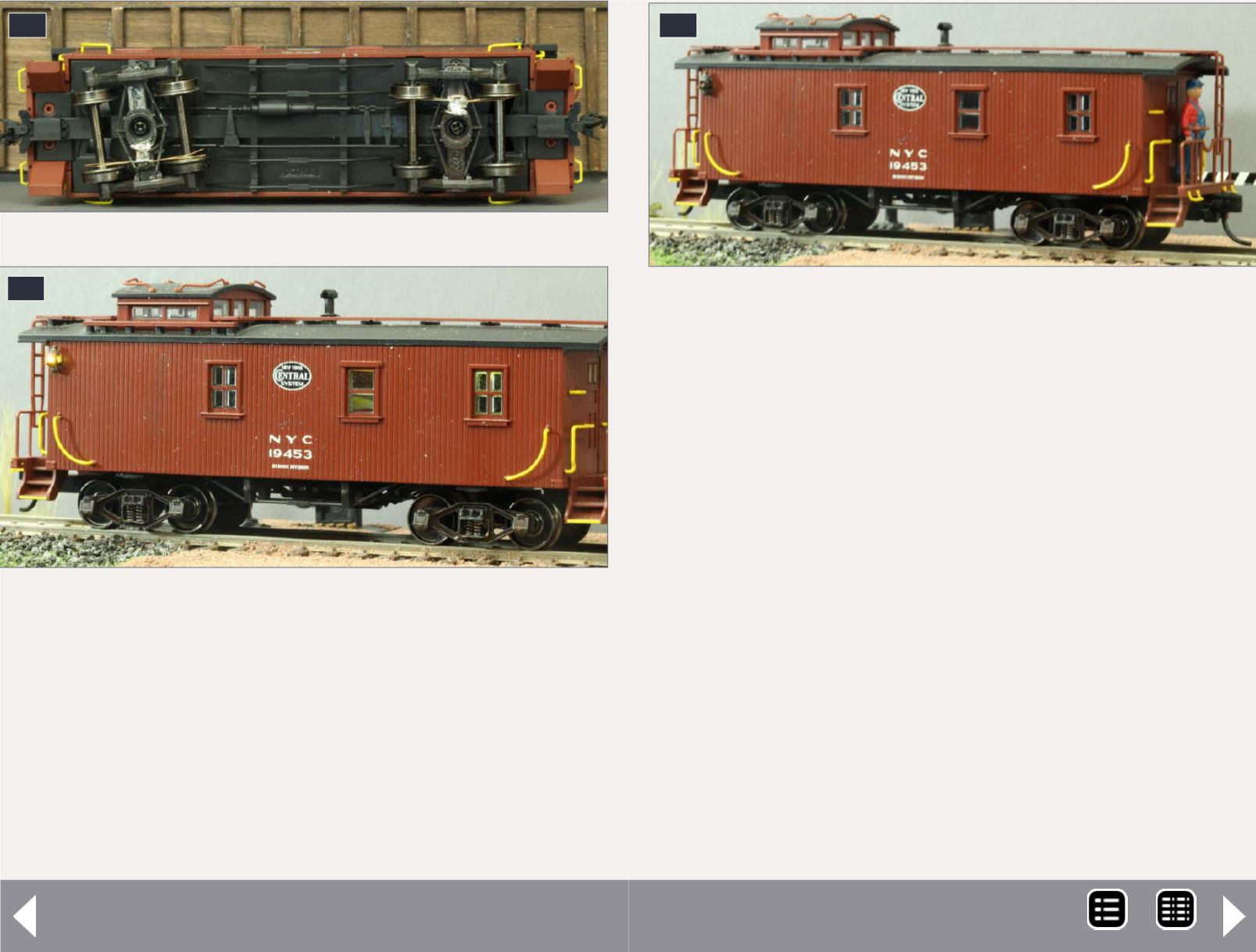
back a day or two later to find that power is still available for
the lights. There is some current draw even when the lights are
switched off, due to the built-in DC-DC converter. Eventually
the battery will be drawn down. I haven’t done any long-term
tests on this scheme.
Powering a locomotive
Since I had found the great little battery manager with built-
in converter, I thought of using it to power a locomotive, even
14
15. Lighted battery-powered caboose.
15
14. Caboose wheel wipers.
Battery-powered models - 7
16
16. Unlighted caboose with Mike as the switch.
though it only puts out 5 volts at .45 amps. I was going to
modify a loco to use a lower voltage motor when I remem-
bered the outstanding low voltage performance of the old
Bachmann 44-ton GE switchers. But these units were also
plagued with split gears. Besides, there was virtually no space
inside the body for my experiments and trials.
Willing to accept the impossible as a challenge, I looked for the
maximum size body I could put on top of the 44-tonner chas-
sis. From the pile of misbegotten acquisitions, I found an old
MDC/Roundhouse boxcab shell that fit nearly perfectly on the
switcher frame! I opened an old early-run two-motor 44-ton
switcher box, thinking that nothing could have affected the
gears inside. To my chagrin, all four axle gears were starting to
crack from the outside in, but none of the cracks had reached
the gear teeth.
The weeping and gnashing of teeth over splitting gears, and
the valiant efforts of expert machinists and tubing mashers,
has been well recorded in the MRH forums. With neither the
proper size tubing, nor the right stock on hand to machine,
MRH-Nov 2014


